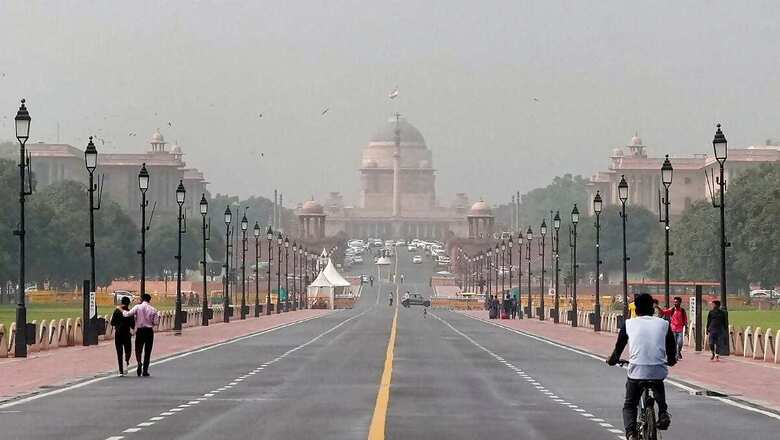
views
Delhi-NCR did not feature in the top 10 worst air quality stations in Asia on Sunday, holding the promise that this may turn out to be the best Diwali in eight years. The national capital’s air quality index stood at 202 at 7 am in the ‘poor’ category, which is the best in at least three weeks, with the 24-hour average at 220 — the lowest for the day before Diwali in eight years.
According to data around 5.30 pm by the Asia Air Pollution Statistics, which records air quality index (AQI) in real-time, Delhi-NCR was nowhere in the top 10 worst air quality stations in Asia. Eight out of 10 ‘most polluted’ places in the list, however, were from India with three from Bihar, two from Madhya Pradesh, one each from West Bengal and Odisha. The highest in the list was Bihar’s Samanpura with an AQI of 582 in the ‘severe plus/hazardous’ category. The lowest in the list was Katni in Madhya Pradesh with an AQI of 199, threatening to breach the ‘moderate’ category.
Here is a list of the Indian cities and towns in the list of 10 worst air quality stations in Asia:
- Samanpura, Patna, Bihar: AQI 582 (severe plus/hazardous)
- Ghusuri, Howrah, West Bengal: AQI 498 (severe plus)
- GVM Corporation, Visakhapatnam, Andhra Pradesh: AQI 463 (severe plus)
- DRCC Anandpur, Begusarai, Bihar: AQI 423 (severe)
- Chhoti Gwaltoli, Indore, Madhya Pradesh: AQI 371 (very poor)
- Darshan Nagar, Chhapra, Bihar: AQI 341 (very poor)
- Talcher Coalfields, Talcher, Odisha: AQI 206 (poor)
- Gole Bazar, Katni, India: Madhya Pradesh AQI 199 (moderate)
An AQI between zero and 50 is considered ‘good’, 51 and 100 ‘satisfactory’, 101 and 200 ‘moderate’, 201 and 300 ‘poor’, 301 and 400 ‘very poor’, 401 and 450 ‘severe’ and above 450 ‘severe plus’.
Delhi saw a sharp improvement in air quality just ahead of Diwali, which can be attributed to intermittent rainfall on November 10 and wind speed favourable for the dispersion of pollutants. To put this in perspective, the 24-hour average AQI stood at 437 on November 9.
Delhi recorded an AQI of 312 on Diwali last year, 382 in 2021, 414 in 2020, 337 in 2019, 281 in 2018, 319 in 2017, and 431 in 2016, as per the Central Pollution Control Board (CPCB) data.
Since October 28, the national capital has been blanketed in a suffocating haze with “very poor” to “severe” air quality for two weeks. The IMD had earlier predicted a marginal improvement just ahead of Diwali, owing to favourable meteorological conditions, including light rain under the influence of a western disturbance.
A western disturbance led to rains over most parts of northwest India, including Punjab and Haryana, effectively reducing the contribution of smoke from stubble burning to Delhi’s air pollution.
Last year, too, a decrease in stubble-burning incidents, delayed spells of rain, favourable meteorological conditions and an early Diwali prevented the national capital from turning into a gas chamber following the festival of lights.













Comments
0 comment